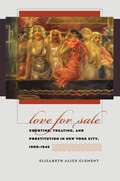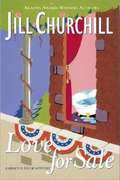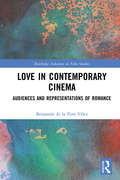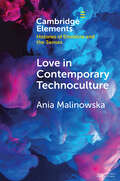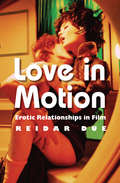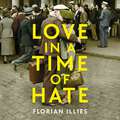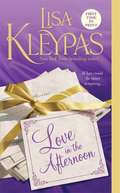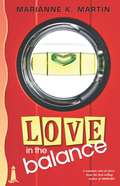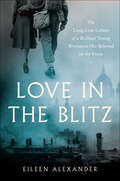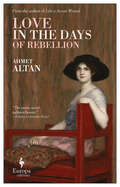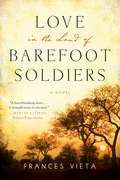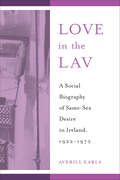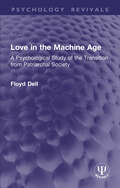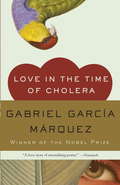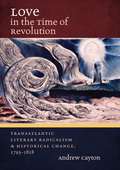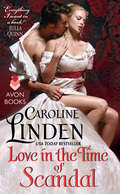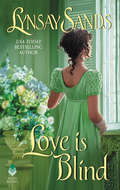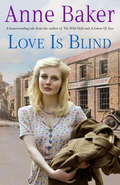- Table View
- List View
Love for Sale
by Elizabeth Alice ClementThe intense urbanization and industrialization of America's largest city from the turn of the twentieth century to World War II was accompanied by profound shifts in sexual morality, sexual practices, and gender roles. Comparing prostitution and courtship with a new working-class practice of heterosexual barter called "treating," Elizabeth Alice Clement examines changes in sexual morality and sexual and economic practices.Women "treated" when they exchanged sexual favors for dinner and an evening's entertainment or, more tangibly, for stockings, shoes, and other material goods. These "charity girls" created for themselves a moral space between prostitution and courtship that preserved both sexual barter and respectability. Although treating, as a clearly articulated language and identity, began to disappear after the 1920s and 1930s, Clement argues that it still had significant, lasting effects on modern sexual norms. She demonstrates how treating shaped courtship and dating practices, the prevalence and meaning of premarital sex, and America's developing commercial sex industry. Even further, her study illuminates the ways in which sexuality and morality interact and contribute to our understanding of the broader social categories of race, gender, and class.
Love for Sale (A grace And Favor Mystery #4)
by Jill ChurchillA GRACE & FAVOR MYSTERY Sister and brother Lily and Robert Brewster, raised in the lap of luxury, may no longer have a penny to their names, but at least they have a roof over their heads--which is more than many can say in this bleak November of 1932. This is thanks to their eccentric great-uncle, whose will allows them to live in his mansion on a sprawling estate in Voorburg-on-Hudson. And now there’s even some cash rolling in, since the Brewsters have taken part-time teaching duties at the local grade school. But their luck turns sour when a mysterious and badly disguised stranger comes to Grace and Favor willing to pay generously to have a secret meeting there shortly before the presidential election. Are they gangsters? Pretty Boy Floyd is rumored to be somewhere near. Or worse, are they a rabid pro-Hoover political group trying to stop Roosevelt from being elected at the last minute by making up some nasty gossip about him? When one of the mystery guests is murdered in his bath, a little boy is kidnapped, and Chief Howard Walker can’t find anywhere to house all his suspects except the local Hospital for the Criminally Insane, the pace becomes hectic. In the end a local woman, a secretary from upriver whom Lily has befriended, and one of the children at the school provide the vital clues that allow Lily to put two and two together. But only after a wild car chase with three women drivers. You'll find other books in the Grace and Favor mysteries in the Bookshare Library.
Love for Sale: Pop Music in America
by David HajduA personal, idiosyncratic history of popular music that also may well be definitive, from the revered music criticFrom the age of song sheets in the late nineteenth-century to the contemporary era of digital streaming, pop music has been our most influential laboratory for social and aesthetic experimentation, changing the world three minutes at a time.In Love for Sale, David Hajdu—one of the most respected critics and music historians of our time—draws on a lifetime of listening, playing, and writing about music to show how pop has done much more than peddle fantasies of love and sex to teenagers. From vaudeville singer Eva Tanguay, the “I Don’t Care Girl” who upended Victorian conceptions of feminine propriety to become one of the biggest stars of her day to the scandal of Blondie playing disco at CBGB, Hajdu presents an incisive and idiosyncratic history of a form that has repeatedly upset social and cultural expectations.Exhaustively researched and rich with fresh insights, Love for Sale is unbound by the usual tropes of pop music history. Hajdu, for instance, gives a star turn to Bessie Smith and the “blues queens” of the 1920s, who brought wildly transgressive sexuality to American audience decades before rock and roll. And there is Jimmie Rodgers, a former blackface minstrel performer, who created country music from the songs of rural white and blacks . . . entwined with the sound of the Swiss yodel. And then there are today’s practitioners of Electronic Dance Music, who Hajdu celebrates for carrying the pop revolution to heretofore unimaginable frontiers. At every turn, Hajdu surprises and challenges readers to think about our most familiar art in unexpected ways.Masterly and impassioned, authoritative and at times deeply personal, Love for Sale is a book of critical history informed by its writer's own unique history as a besotted fan and lifelong student of pop.
Love for a Soldier: A captivating romantic adventure set in WW1 that you won’t want to put down
by Mary Jane StaplesA must read for fans of Katie Flynn, Fiona Valpy and Kristin Hannah - this is an enthralling and gripping romantic adventure from the multi-million copy seller Mary Jane Staples.READERS ARE LOVING LOVE FOR A SOLDIER! "As with all books by this author it is a top quality read..." - 5 STARS "What a great book - had a job to put it down. Recommend this book: 5 stars and more..." - 5 STARS "Excellent, thrilling and exciting." - 5 STARS****************************SHOULD SHE STAY LOYAL TO HER COUNTRY, OR THE MAN SHE LOVES?France, 1918: When Sophia, the rebellious daughter of a distinguished German general, witnesses a dramatic battle in the skies that leaves an English pilot without a plane and under the misapprehension that Sophia is on his side, she finds she has no choice but to agree to assist him in his attempt to avoid capture. He joins her in the family car she has stolen, trailed by both the German Army and a staff officer under strict instructions from Sophia's father to bring her home. With their pursuers hot on their heels, how will Sophia explain her behaviour, protecting a man she is supposed to hate? And after sharing so many adventures, will she be able to turn the flying officer in when the time comes?
Love in Contemporary Cinema: Audiences and Representations of Romance (Routledge Advances in Film Studies)
by Benjamín de Pava VélezThis book looks at social representations of romantic love as portrayed in films and interpreted by their audiences, using cinema as a means for analysing the state of romantic love today, and the touchpoints and disconnects between its representation on screen and the lived experiences of film audiences. Through a media sociology lens, the book draws on analysis of five contemporary romantic films and the meanings brought to and made from them by socially and economically diverse audiences. Employing both textual analysis and primary interviews, the book contests overly pessimistic perspectives on modern intimacy while acknowledging and exploring some of the challenges, woes and changes that romantic love is experiencing in late capitalism. Concerns and debates over monogamy, the teleology romantic love and the division of labour in relationships percolate in this book’s examination of how audiences’ responses to these films reflect their attitudes and expectations regarding romantic love. This book will have great resonance for scholars and students of not just film studies and media studies, but also audience studies, media sociology, philosophy, gender and sexuality.
Love in Contemporary Technoculture (Elements in Histories of Emotions and the Senses)
by Ania MalinowskaThis Element outlines the environments of loving in contemporary technoculture and explains the changes in the manner of feelings (including the experience of senses, spaces, and temporalities) in technologically mediated relationships. Synchronic and retrospective in its approach, this Element defines affection (romance, companionship, intimacy etc.) in the reality marked by the material and affective 'intangibility' that has emerged from the rise of digitalism and technological advancement. Analysing the (re)constructions of intimacy, it describes our sensual and somatic experiences in conditions where the human body, believed to be extending itself by means of the media and technological devices, is in fact the extension of the media and their technologies. It is a study that outlines shifts and continuums in the 'practices of togetherness' and which critically rereads late modern paradigms of emotional and affective experiences, filling a gap in the existing critical approaches to technological and technologized love.
Love in Motion: Erotic Relationships in Film
by Reidar DueThis is a book about how film encountered love in the course of its history. It is also a book about the philosophy of love. Since Plato, erotic love has been praised for leading the soul to knowledge. The vast tradition of poetry devoted to love has emphasized that love is a feeling. Love in Motion presents a new metaphysics and ontology of love as a reciprocal erotic relationship. The book argues that film has been particularly well suited for depicting love in this way, in virtue of its special narrative language. This is a language of expression that has developed in the course of film history. The book spans this history from early silent directors such as Joseph von Sternberg to contemporary filmmakers like Sophia Coppola. At the centre of this study is a comparison between Classical French and American love films of the forties and a series of modernist films by Luis Buñuel, François Truffaut and Wong Kar Wai.
Love in Wartime: 4 Historical Romances
by Becky Lower Jenny Jacobs Pema Donyo Marie PatrickA value-priced collection featuring heart-tugging historical romance stories of love and hope, set against the backdrops of war-torn battlefields and the home front.Love is a battlefield in these four romances starring courageous patriots called to duty for their country. With emotions running high and lives placed bravely on the lines, will they have the strength to fight for love as war wages on? The Forgotten Debutante: Saffron Fitzpatrick spent her teenage years mourning the dead rather than dancing at her debutante ball, with the exception of one forbidden kiss with solider Ezekiel Boone. Fate reunites the couple three years later, and they discover unexpected common ground and begin to build a relationship. But though the war is over, a future together may still elude them…especially if Saffron’s brother and the U.S. Army have anything to say about it. Mischief and Magnolias: Natchez, Mississippi, peacefully surrendered to the Union Army—but Shaelyn Cavanaugh didn’t. Major Remy Harte has taken over her home and her beloved steamboats, and she will use every mischievous weapon at her disposal to show the Union soldier that he has chosen unwisely. But he finds the attempts to make him leave Magnolia House amusing and his growing attraction to Shae unavoidable. Can their budding romance survive when a common enemy accuses her of espionage? Revolutionary Hearts: To complete his mission in India’s fight for independence, General Carton—a.k.a. U.S. undercover operative Warren Khan—must hide both his true objective and his heritage. But once he meets the captivating Parineeta, who holds the key to both his freedom and capturing her brother, a suspected anarchist, he finds the subterfuge more difficult than anticipated. The Winter Promise: In the fall of 1053, Lady Imma has one loyalty: to help her uncle, the king of Wales, win his war against the English. Lord Robert, the steward of Wessex, has one loyalty as well: to keep his beloved Wessex safe from enemies. When she is forced to seek shelter in his keep, they must decide if they can listen to their hearts—or if they would be wiser never to trust each other. Sensuality Level: Sensual
Love in a Bottle
by Zoë ArcherThe crowd waited as Sophie pretended to feel the love potion coursing through her body. They had rehearsed that Sophie would put her arms around his neck and give him a simple close-mouthed kiss. But Sophie had something else in mind.
Love in a Major Key
by Fiona HillThe heart follows its own tune in a Regency romance from an author with “considerably more wit and pizazz than the legendary Georgette [Heyer] herself” (Kirkus Reviews). When Daphne left her family’s country estate at Verchamp Park for a season in London, it was certainly with no expectation of romance. She soon discovers, however, that she has no difficulty in finding suitors—only in choosing among them. All of them are quite acceptable, with the sole exception of Christian Livingston, the handsome and sensuous pianofortist. Surely, little good could come of any attachment she might form for him. And yet, could propriety stand in Daphne’s way once her heart has been ensnared?
Love in a Time of Hate: Art and Passion in the Shadow of War
by Florian IlliesAn ingeniously orchestrated popular history brings to life the most pivotal decade of the twentieth centuryAs the Roaring Twenties wind down, Jean-Paul Sartre waits in a Paris café for a first date with Simone de Beauvoir, who never shows. Marlene Dietrich slips away from a loveless marriage to cruise the dive bars of Berlin. The fledgling writer Vladimir Nabokov places a freshly netted butterfly at the end of his wife&’s bed. Hannah Arendt, Walter Benjamin, Zelda and Scott, Dalí and Gala, Picasso and his many muses, Henry and June and Anaïs Nin, the entire extended family of Thomas Mann, and a host of other fascinating and famous figures make art and love, write and row, bed and wed and betray. They do not yet know that they, along with millions of others, will soon be forced to contemplate flight—or fight—as the world careens from one global conflict to the next.
Love in a Time of Hate: Art and Passion in the Shadow of War, 1929-39
by Florian IlliesA Financial Times 'Book to Read in 2023'1930s Europe - as the Roaring Twenties wind down and the world rumbles towards war, the great minds of the time have other concerns.Jean-Paul Sartre waits anxiously in a Parisian café for his first date with no-show Simone de Beauvoir. Marlene Dietrich slips from her loveless marriage into the dive bars of Berlin. Father and son Thomas and Klaus Mann clash over each other's homosexuality. And Vladimir Nabokov lovingly places a fresh-caught butterfly at theend of Verá's bed. Little do they all know, the book burning will soon begin.Love in a Time of Hate skilfully interweaves some of the greatest love stories of the 1930s with the darkening backdrop of fascism in Europe, in an irresistible journey into the past that brings history and its actors to vivid life.
Love in the Afternoon (The Hathaways #5)
by Lisa KleypasAs a lover of animals and nature, Beatrix Hathaway has always been more comfortable outdoors than in the ballroom. Even though she participated in the London season in the past, the classic beauty and free-spirited Beatrix has never been swept away or seriously courted. . . and she has resigned herself to the fate of never finding love. Has the time come for the most unconventional of the Hathaway sisters to settle for an ordinary man--just to avoid spinsterhood? Captain Christopher Phelan is a handsome, daring soldier who plans to marry Beatrix's friend, the vivacious flirt Prudence Mercer, when he returns from fighting abroad. But, as he explains in his letters to Pru, life on the battlefield has darkened his soul--and it's becoming clear that Christopher won't come back as the same man. When Beatrix learns of Pru's disappointment, she decides to help by concocting Pru's letters to Christopher for her. Soon the correspondence between Beatrix and Christopher develops into something fulfilling and deep. . . and when Christopher comes home, he's determined to claim the woman he loves. What began as Beatrix's innocent deception has resulted in the agony of unfulfilled love--and a passion that can't be denied. . .
Love in the Afternoon: Mine Till Midnight, Seduce Me At Sunrise, Tempt Me At Twilight, Married By Morning, And Love In The Afternoon (The Hathaways #5)
by Lisa KleypasFrom the New York Times bestselling author Lisa Kleypas comes the next stunning novel in the Hathaways series - perfect for fans of Sarah MacLean, Julia Quinn and Eloisa James. 'Lisa Kleypas is the best' Sarah MacLean She harbours a secret yearning . . .As a lover of animals and nature, Beatrix Hathaway has always been more comfortable outdoors than in the ballroom. Even though she participated in the London season in the past, the classic beauty and free-spirited Beatrix has never been swept away or seriously courted . . . and she has resigned herself to the fate of never finding love. Has the time come for the most unconventional of the Hathaway sisters to settle for an ordinary man - just to avoid spinsterhood?He is a world-weary cynic . . .Captain Christopher Phelan is a handsome, daring soldier who plans to marry Beatrix's friend, the vivacious flirt Prudence Mercer, when he returns from fighting abroad. But, as he explains in his letters to Pru, life on the battlefield has darkened his soul - and it's becoming clear that Christopher won't come back as the same man. When Beatrix learns of Pru's disappointment, she decides to help by concocting Pru's letters to Christopher for her. Soon the correspondence between Beatrix and Christopher develops into something fulfilling and deep . . . and when Christopher comes home, he's determined to claim the woman he loves. What began as Beatrix's innocent deception has resulted in the agony of unfulfilled love - and a passion that can't be denied . . . 'Kleypas can make you laugh and cry - on the same page' Julia Quinn The Hathaways: Mine Till Midnight Seduce Me at Sunrise Tempt Me at Twilight Married by Morning Love in the AfternoonPraise for Lisa Kleypas:'Lushly sexy and thoroughly romantic . . . superbly crafted characters and an intriguing plot blend together brilliantly in this splendid romance' Booklist 'Intricately and elegantly crafted, intensely romantic . . . from a not-to-be-missed romance author' Kirkus Reviews'Witty, often hilarious, and delightfully passionate' Library Journal, starred review'Readers are introduced to the unforgettable characters and their original personalities through a delightful storyline peppered with sharp repartee and steamy sensuality' RT Book Reviews (top pick)'An unforgettable story peopled with remarkable characters and a depth of emotion that will leave you breathless' Romantic Times BOOKreviews'Is it possible to give a book 6 stars? . . . [This] story has all of the forbidden romance, witty banter, and sigh-inducing declarations of love that you deserve' That's Normal
Love in the Balance
by Marianne K. Martin"Not only does [Love in the Balance] have love and excitement, but it has issues very close to all of us."-The Alabama Forum Gaiety"Marianne Martin is a wonderful storyteller and a graceful writer with a light, witty touch with language and a sensitivity to the emotions of people in love."-Ann BannonReal life has a way of sneaking up on you.Connie likes men. Sure, she's just dumped one, but she'll find another one soon enough. Instead she finds Kasey. Who happens to be a woman-a lesbian, actually. Connie reckons they'll be good friends, and she soon realizes she wants more.But Kasey has already had her heart broken. Her ex-girlfriend turned out to like men. Kasey won't take a chance on that happening again. And her friends won't let her, either. Especially not Sharon.If this is love, Connie has a lot of convincing to do and a lot of people to win over. Just when it seems like maybe she has, real life comes sneaking up again. Some people hate lesbians-hate them enough to kill. And it's not obvious that the authorities care. Connie and Kasey and Sharon must each put their doubts to the side and work together to get justice.Marianne K. Martin is the author of eight novels and has been shortlisted three times for the Lambda Literary Award.
Love in the Blitz: The Long-Lost Letters of a Brilliant Young Woman to Her Beloved on the Front
by Eileen AlexanderOn July 17th 1939, Eileen Alexander, a bright young woman recently graduated from Girton College, Cambridge, begins a brilliant correspondence with fellow Cambridge student Gershon Ellenbogen that lasts five years and spans many hundreds of letters. But as Eileen and Gershon’s relationship flourishes from friendship and admiration into passion and love, the tensions between Germany, Russia, and the rest of Europe reach a crescendo. When war is declared, Gershon heads for Cairo and Eileen forgoes her studies to work in the Air Ministry.As cinematic as Atonement, written with the intimacy of the Neapolitan quartet, Love in the Blitz is an extraordinary glimpse of life in London during World War II and an illuminating portrait of an ordinary young woman trying to carve a place for herself in a time of uncertainty. As the Luftwaffe begins its bombardment of England, Eileen, like her fellow Britons, carries on while her loved ones are called up to fight, some never to return home.Written over the course of the conflict, Eileen’s letters provide a vivid and personal glimpse of this historic era. Yet throughout the turmoil and bloodshed, one thing remains constant: her beloved Gershon, who remains a source of strength and support, even after he, too, joins the fighting. Though his letters have been lost to time, the bolstering force of his love for Eileen is illuminated in her responses to him.Equal parts heartrending and heartwarming, Love in the Blitz is a timeless romance and a deeply personal story of life and resilience amid the violence and terror of war.
Love in the Days of Rebellion (Ottoman Quartet #2)
by Ahmet AltanThe author of Like a Sword Wound weaves an &“ambitious and intelligent thriller about love and war&” in the early twentieth-century Ottoman Empire (Kirkus Reviews).Love in the Days of Rebellion is the second installment in Ahmet Altan&’s masterful saga of Turkish history, The Ottoman Quartet. Following the vast and vivid cast of characters introduced in Like A Sword Wound, it opens with the attempted suicide of Hikmet Bey, the son of the sultan&’s personal physician. Hikmet is driven to this extreme in an attempt to forget his wife, the beautiful and proud Mehpare Hanim. While Hikmet is recovering in a hospital in Thessaloniki, slowly regaining his strength and will to live, radical changes are afoot in the Ottoman capital. The power of the sultan is eroding, a rebellion is brewing, and violence erupts on the streets of Istanbul. It is the eve of the 1909 countercoup, an event that will lead to the Empire&’s collapse. With striking clarity and imaginative power, Altan evokes the traumas and upheavals of Ottoman history, showing how the events and wounds of that time still resonate in the tensions and contradictions of today&’s Turkey.
Love in the Land of Barefoot Soldiers: A Novel
by Frances VietaCan newfound love survive the ravages of modern warfare in the land of the Queen of Sheba?Twenty-something Ceseli Larson is mourning the recent death of her cherished father. His passing comes as she prepares to undertake a planned but harrowing expedition to the lost ruins of Axum. Axum, capital of an ancient kingdom and the possible resting place of the Ark of the Covenant, was also once the famous home of the Queen of Sheba. Ceseli hopes to uncover its long-forgotten archaeological mysteries.What she does not count on, though, is that Benito Mussolini's invasion of Ethiopia looms on the horizon, about to be unleashed, sending an already dangerous journey into chaos. Nor does she expect the feeling she discovers for a young Italian doctor, nor the romance that blossoms between them.Love in the Land of Barefoot Soldiers is a sweeping tale of romance and war, as Ceseli is caught between the movements of empires and her growing love for a member of the invading army. History and the destruction of the modern era collide in this exciting drama.
Love in the Lav: A Social Biography of Same-Sex Desire in Ireland, 1922-1972 (Sexuality Studies)
by Averill EarlsLove in the Lav uncovers Ireland’s queer lives of the past. Averill Earls investigates how same-sex-desiring men lived and loved in a country where their sexuality was illegal and seen as unnatural. Across seven social biographical chapters, each highlighting individuals at the nexus of these histories, Earls constructs a narrative of experiences through the larger contexts in which they are embedded. Earls uses courtroom testimonies, police records, and family history archives as well as “educated speculation” to show how structures governing male same-sex desire in Ireland played out on the bodies of the men who desired men, the teen boys who sold sex to men, and the way the Catholic-nationalist ethos shaped the Gardaí who policed them. Love in the Lav examines the experiences of people such as cabbie James Hand, who was put on trial for gross indecency, to provide a window into the queer working-class subculture of 1930s Dublin. Earls also focuses on issues of consent, especially with teens, and the unregulated queer Irish world of public figures, including Micheál Mac Liammóir, Hilton Edwards, Ronald Brown, and John Broderick. By examining twentieth-century Ireland through the lived experiences of ordinary same-sex-desiring Irish men who were relegated to obscurity by Irish society, Earls reveals the contradictions, possibilities, and magnitude of postcolonial Irish Catholic nationalism. In the series Sexuality Studies
Love in the Machine Age: A Psychological Study of the Transition from Patriarchal Society (Psychology Revivals)
by Floyd DellFirst published in 1930, the object of Love in the Machine Age was to popularize a modern and scientific view of behavior, and thereby help people to live happy and successful lives. The author traces in popular language for the time, the break-up of the patriarchal values held by most of society, and points out from the standpoint of modern psychiatric knowledge the inevitable effects upon sexual mores, personality adjustments and the growth of children. Topics covered include marriage, parenting, adolescence, with special emphasis paid to the “mating problems” of youth. Taking its lead from psychological theories prevalent at the time, today it can be read in its historical context.This book is a re-issue originally published in 1930. The language used and views portrayed are a reflection of its era and no offence is meant by the Publishers to any reader by this re-publication.
Love in the Time of Cholera (Vintage International)
by Gabriel García MárquezINTERNATIONAL BESTSELLER • "A love story of astonishing power" (Newsweek), the acclaimed modern literary classic by the beloved Nobel Prize-winning author.In their youth, Florentino Ariza and Fermina Daza fall passionately in love. When Fermina eventually chooses to marry a wealthy, well-born doctor, Florentino is devastated, but he is a romantic. As he rises in his business career he whiles away the years in 622 affairs--yet he reserves his heart for Fermina. Her husband dies at last, and Florentino purposefully attends the funeral. Fifty years, nine months, and four days after he first declared his love for Fermina, he will do so again.
Love in the Time of Revolution
by Andrew CaytonIn 1798, English essayist and novelist William Godwin ignited a transatlantic scandal with Memoirs of the Author of "A Vindication of the Rights of Woman." Most controversial were the details of the romantic liaisons of Godwin's wife, Mary Wollstonecraft, with both American Gilbert Imlay and Godwin himself. Wollstonecraft's life and writings became central to a continuing discussion about love's place in human society. Literary radicals argued that the cultivation of intense friendship could lead to the renovation of social and political institutions, whereas others maintained that these freethinkers were indulging their own desires with a disregard for stability and higher authority. Through correspondence and novels, Andrew Cayton finds an ideal lens to view authors, characters, and readers all debating love's power to alter men and women in the world around them. Cayton argues for Wollstonecraft's and Godwin's enduring influence on fiction published in Great Britain and the United States and explores Mary Godwin Shelley's endeavors to sustain her mother's faith in romantic love as an engine of social change.
Love in the Time of Scandal
by Caroline LindenUSA Today bestselling author Caroline Linden's third novel in her Scandalous series brings together a feisty heiress, a notorious rake, and a shocking book that could bring one woman the utmost despair-- or the greatest pleasurePenelope Weston does not like Benedict Lennox, Lord Atherton. He may be the suave and charming heir to an earl, as well as the most handsome man on earth, but she can't forget how he abandoned a friend in need-- nor how he once courted her sister, Abigail. He's the last man she would ever marry. If only she didn't feel so attracted to the arrogant scoundrel . . .Once upon a time, Benedict thought he and Penelope got along rather well. Though he needs a wealthy bride to escape his cruel father's control, spirited Penelope just doesn't suit his plans for a model marriage--until a good deed goes awry, and scandalous rumors link his name to Penelope's. She might not be the quiet, sensible wife he thought he wanted, but she is beautiful . . . beguiling . . . and far more passionate than he ever imagined. Can a marriage begun in scandal become a love match, too?
Love is Blind (Leisure Historical Romance Ser.)
by Lynsay SandsHe'd been warned that Lady Clarissa Crambray was dangerous. Stomping on toes and burning piffles, the chestnut-haired beauty was clearly a force with which to be reckoned. But for Adrian Montfort, Earl of Mowbray, veteran of the Napoleonic Wars, this was just the challenge he needed. He could handle one woman and her "unfortunate past." Could any woman handle him? Lady Clarissa Crambray wanted a husband, but maybe not as much as her stepmother wanted one for her. Really! Doffing her spectacles might make a girl prettier, but how would she see? She'd already caused enough mayhem to earn a rather horrible nickname. Yet, as all other suitors seemed to shy away in terror, there came a man to lead her to the dance floor. A dark, handsome, blur of a man.
Love is Blind: A gripping saga of war, tragedy and bitter jealousy
by Anne BakerA family struggles to survive bereavement, bombing and bitter rivalry... Love is Blind is a gripping wartime saga from much-loved author Anne Baker, which follows a family's path through heartache and war. Perfect for fans of Katie Flynn and Sheila Newberry.Patsy Rushton's brother Barney doesn't know the meaning of hard work, so when their father tragically dies, Patsy has no choice but to save the family's business. Meanwhile, Barney has got his girlfriend pregnant and, feeling trapped, he abandons her and leaves Merseyside altogether. But trouble follows Barney wherever he goes and when he learns of his sister's growing success, he can't help feeling resentful. Why is their mother, Beatrice, so quick to forgive him? Surely, she can't be blind to his faults? As Patsy is to discover, there's something else about Barney that is frightening her mother so much she has never dared to speak of it before. What readers are saying about Love is Blind: 'Very good, easy read. The twists and turns in the plot kept the intrigue alive. I would recommend to anyone''Engaging characters and a gripping war time story. A good insight into life during the war. Can't wait to read another of Anne Baker's books'
